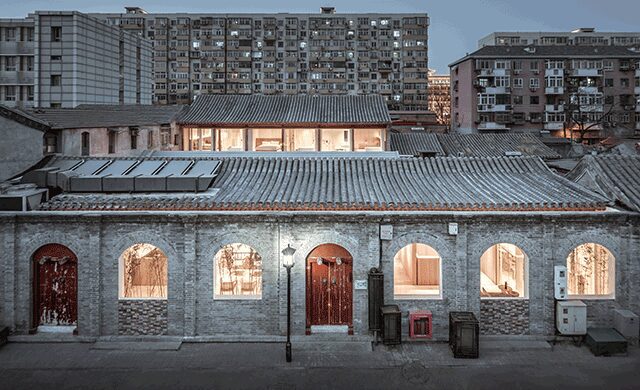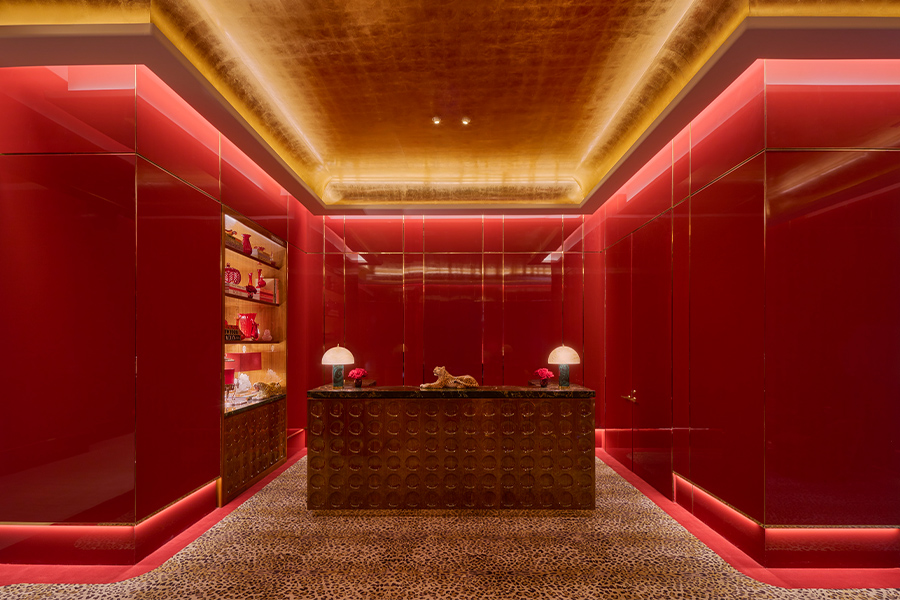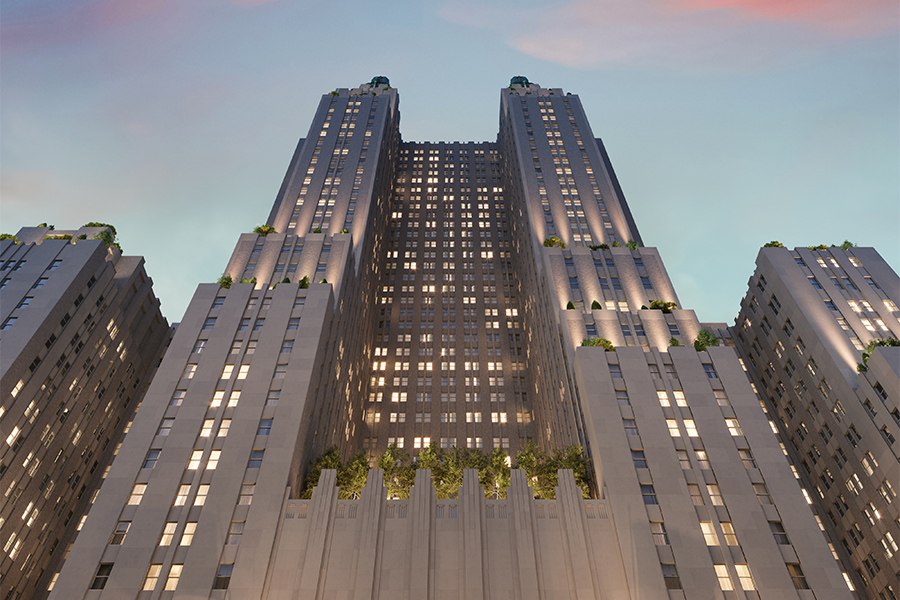
In Beijing, elegant, symmetrical quadrangle courtyards—the siheyuan that line the city’s maze of cramped streets and alleys called hutong—are as much cultural symbols of ancient China as they are architectural ones. Families have lived in these historic structures for generations, and Han Wenqiang, founder and principal architect of local firm Archstudio, wanted to illuminate that heritage when he transformed one such compound into an intimate seven-room hotel and events venue.
Situated on a commercial street in Beijing’s Qianmen district, the languishing 5,700-square-foot site had past lives as both a brothel and a bakery. The tech-centric Layering Courtyard is the latest incarnation, where Archstudio sparked a dialogue between the old and the new throughout. “The design converts the traditional image of a deep courtyard into a contemporary hutong renovation,” says Wenqiang, who also recasts the relationship between indoors and out, natural and artificial.
The hotel comprises three rectangular-shaped buildings that run parallel to one another in a calming layout; privacy increases as guests venture farther inside. To deepen the connection between the façade and street, part of the roof was demolished on the south-facing structure—home to the reception, restaurant, and bar—which beckons from the street with a row of original arches and windows. Inside, the interior showcases well-preserved wooden beams and columns.
“We considered a comprehensive list of factors when choosing the materials for the floor, walls, and ceilings, aiming to create a warm ‘wooden world,’” explains Wenqiang. “Glass makes the rooms feel more transparent, and people can enjoy the view in the courtyard.” The material reappears as frosted walls lining the various spaces and walkways that connect the buildings, calling to mind misty, overlapping peaks and ultimately framing the bamboo courtyards set between.
A modern contrast to these two 20th-century pavilions is the brand-new middle pavilion designed as a flexible event venue. The ceiling is lined with mirror-finished steel tubes that complement the steel framing and metal roof and “generates interesting reflections,” says Wenqiang. Clear, acrylic furniture and more frosted glass lend the space an ethereal, floating nature that echoes the courtyard’s waterscape.


